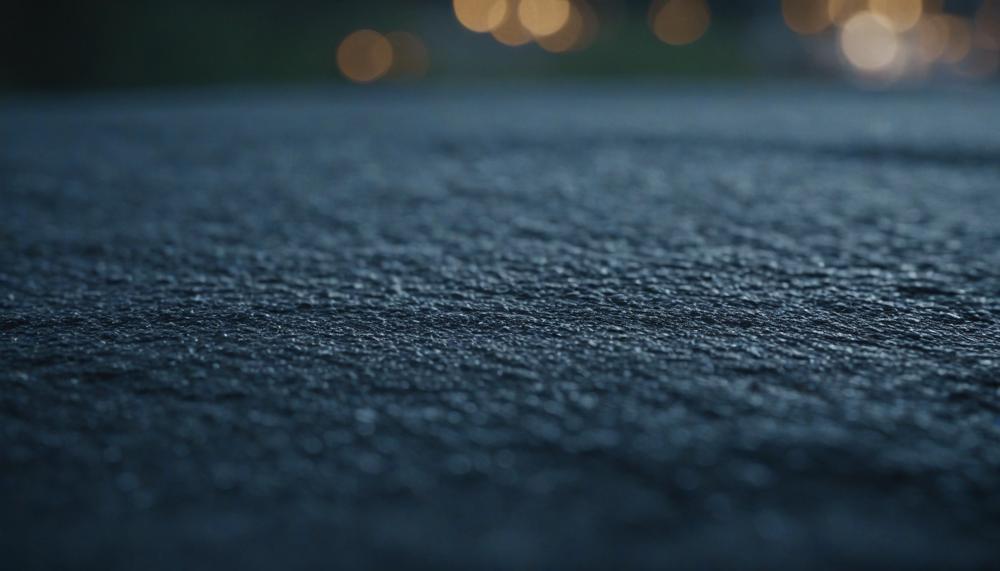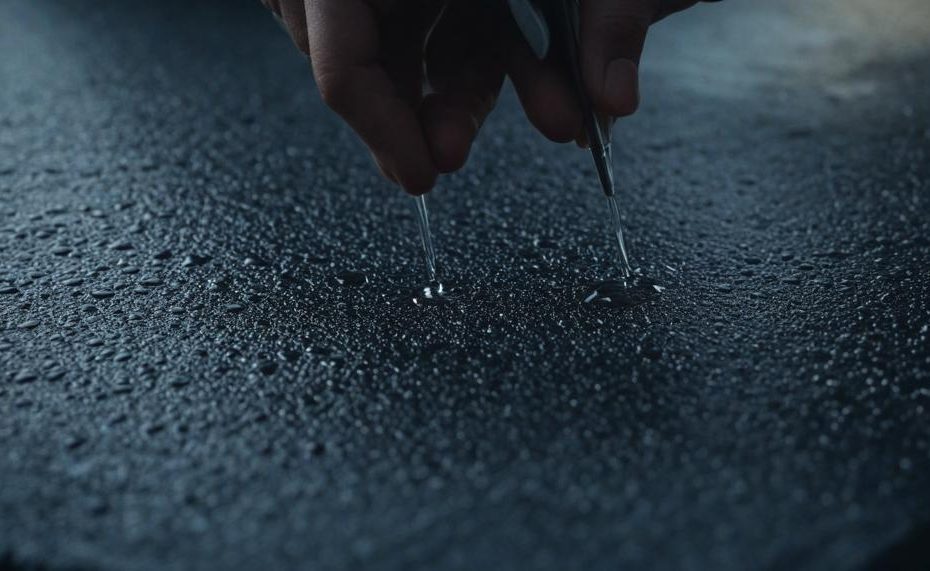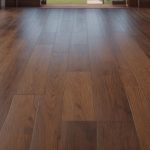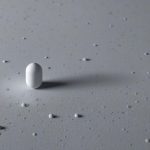Yes, glue stitches are waterproof. Skin glue, a medical adhesive, is commonly used to close wounds and provides a waterproof barrier, protecting the wound from water and bacteria. This type of glue can be used on its own or alongside traditional stitches and adhesive tape, offering a flexible solution for wound care.
Key Takeaways:
- Waterproof Protection: Skin glue creates a seal over the wound, making it resistant to water and external contaminants.
- Versatile Usage: It can be applied alone or combined with stitches and adhesive tape, depending on the severity and location of the wound.
- Healing Aid: By keeping the wound dry and clean, glue stitches promote faster and more efficient healing.
- Convenience: They allow patients to maintain normal hygiene practices without worrying about getting the wound wet.
This initial layer of protection ensures that your wound remains shielded, allowing you to shower and go about your daily activities with minimal disruption. Keep reading to learn more about how glue stitches work, their benefits, and what you should keep in mind while using them.
Table of Contents
How do liquid stitches work?
Yes, liquid stitches can be used for waterproof wound closure.
Liquid stitches, such as Dermabond, are a type of medical adhesive designed to close and protect wounds. These adhesives create a waterproof seal over the wound, preventing water and contaminants from entering and promoting a clean healing environment.
When applied, liquid stitches form a strong bond with the skin, acting as a barrier against external elements. This property makes them especially useful for wounds in areas prone to getting wet or where traditional stitches might be inconvenient. However, while they are waterproof, it’s crucial to follow proper wound care instructions, as prolonged water exposure can still affect healing.
| Feature | Description | Implications |
| Waterproofing | Forms a protective, waterproof layer over the wound. | Keeps the wound dry and clean, reducing infection risk. |
| Application | Applied by a healthcare provider directly onto the wound. | Quick application, dries within minutes, no need for follow-up removal. |
| Comfort | Painless and does not require injections or removal like traditional stitches. | Ideal for patients who are needle-averse or have sensitive skin. |
| Usage Limitations | Not suitable for all types of wounds, especially large or deep ones. | Always consult a medical professional to determine suitability. |
When to use liquid stitches
Liquid stitches, such as Dermabond, are ideal in various scenarios for wound closure due to their unique properties and advantages. Here are some specific situations where liquid stitches are the best option:
| Scenario | Description | Explanation |
| Small, Clean Cuts | Minor lacerations that are straight and have clean edges. | Liquid stitches provide an effective and quick method to close these types of wounds, promoting fast healing and reducing infection risk. |
| Facial Cuts | Wounds on the face where minimizing scarring is important. | Using liquid stitches on facial cuts can significantly reduce scarring, making it a preferred option for aesthetic reasons. |
| Cuts in Children | Small lacerations on children, especially on areas prone to movement. | Liquid stitches are less painful and quicker to apply, making the experience less traumatic for children. |
| Superficial Cuts | Shallow wounds that do not penetrate deeply into the skin layers. | These cuts can be efficiently sealed with liquid stitches, providing a secure and waterproof barrier. |
| Surgical Incisions | Certain surgical wounds, particularly those in cosmetically sensitive areas. | Liquid stitches can enhance healing and provide better cosmetic results compared to traditional sutures. |
| Low-Tension Areas | Cuts on parts of the body where there is minimal tension on the wound edges. | In areas with low skin tension, liquid stitches are effective in holding the wound together without risk of reopening. |
Whennotto use liquid stitches
Liquid stitches, such as Dermabond, offer a convenient and effective solution for certain types of wounds, but they are not suitable for all situations. Here’s a detailed look at when not to use liquid stitches and the potential risks involved:
| Situation | Description | Reason |
| Deep or Jagged Wounds | Wounds that penetrate deep into the skin or have irregular edges | Liquid stitches are not effective for closing deep or irregular wounds and may not provide the necessary support for proper healing. |
| Infected or Contaminated Wounds | Wounds showing signs of infection such as redness, swelling, pus, or warmth | Sealing an infected wound can trap bacteria inside, exacerbating the infection and delaying healing. |
| High-Tension Areas | Wounds on joints or areas that move frequently, like elbows, knees, or fingers | These areas are subject to more stress and movement, making it difficult for liquid stitches to hold the wound edges together effectively. |
| Allergic Reactions | Individuals with a known allergy to cyanoacrylate adhesives | Using liquid stitches in allergic individuals can cause severe skin reactions, including redness, itching, and blistering. |
| Large or Gaping Wounds | Wounds that are wide or cannot be easily approximated | Liquid stitches are not strong enough to hold large wound edges together, leading to poor wound closure and increased risk of scarring. |
| Moist or Oily Skin | Areas where the skin is consistently moist or oily, like around the mouth or hairline | These conditions can prevent the adhesive from sticking properly, reducing the effectiveness of the wound closure. |
Potential Risks of Using Liquid Stitches:
- Allergic Reactions: Though rare, some individuals may develop an allergic reaction to the adhesive, resulting in redness, itching, or swelling.
- Incomplete Closure: If not applied correctly, liquid stitches may not fully close the wound, leading to incomplete healing or increased risk of infection.
- Skin Sensitivity: Prolonged exposure to the adhesive can sometimes cause skin irritation or sensitivity, particularly in individuals with sensitive skin.
- Trapping Bacteria: Inappropriate use on contaminated wounds can trap bacteria, leading to infections that are more severe and harder to treat.
Advantages of liquid stitches
The waterproof nature of liquid stitches provides a distinct advantage over traditional stitches in several significant ways:
| Advantages | Liquid Stitches | Traditional Stitches |
| Protection from Water | Waterproof, preventing infections | Requires avoiding water exposure |
| Healing Conditions | Keeps wound dry for faster healing | Risk of maceration if exposed to moisture |
| Patient Convenience | Allows normal activities like showering and swimming | Needs careful management to stay dry |
Disadvantages of liquid stitches
When compared to traditional stitches, liquid stitches present several potential drawbacks. These concerns, while not universally prohibitive, should be considered when deciding the best wound closure method.
| Not Suitable for All Wounds | Proper Application Required | Limited Support |
| Liquid stitches are ineffective for deep or large wounds. They work best for small cuts and abrasions, but larger or deeper injuries require traditional stitches for adequate closure. | Correct application is crucial. Inadequate technique can lead to poor sealing, increasing the risk of infection or delayed healing. It’s essential to follow specific instructions for optimal results. | They may not provide sufficient structural support, especially for wounds under tension or in areas with significant movement. Traditional stitches offer better support to ensure proper alignment and healing. |
| Possible Skin Reactions | Limited Use Cases | Cost and Availability |
| Some individuals may experience skin irritation or allergic reactions to the adhesive components in liquid stitches, necessitating their removal and replacement with traditional stitches. | Liquid stitches are not suitable for wounds in certain locations, such as those in hairy areas or near joints where movement can disrupt the adhesive bond. | In some regions, liquid stitches might be more expensive and less readily available than traditional stitches, impacting their practicality and widespread use. |

How do you use Dermabond?
To properly use Dermabond and ensure waterproof glue stitches, follow these detailed steps:
- Wound Selection: Choose wounds on the face, extremities, and torso that are 5-0 or smaller in diameter. Dermabond is suitable for small, superficial lacerations.
- Wound Cleansing: Cleanse the wound thoroughly with an antibacterial compound followed by a sterile saline solution. This step is crucial to prevent infection.
- Wound Edge Preparation: Bring the wound edges together using gentle pressure. Ensure that the edges are closely apposed and not overlapping.
- Dermabond Application: Apply the Dermabond adhesive directly across the wound edges. Hold the wound edges together for about 60 seconds to allow the adhesive to bond effectively.
- Subcutaneous Sutures: For wounds in areas of high tension or mobility, use subcutaneous sutures to provide additional support. This is particularly important for deeper lacerations on the torso and extremities.
- Scalp Wounds: If Dermabond is used on scalp wounds, keep the area dry for at least five days to ensure proper adhesion and waterproofing.
- Immobilization: For wounds on joints or other high-mobility areas, immobilize the joint to prevent the adhesive from breaking due to movement.
- Post-Application Care: Avoid getting the wound wet for the first 24 hours. After this period, the wound can be gently cleaned with soap and water, but vigorous scrubbing should be avoided.
- Monitor for Dehiscence: Check the wound regularly for signs of dehiscence, especially in wounds without subcutaneous sutures, as these have a higher risk of reopening.
Detailed Steps and Considerations
| Step | Description | Considerations |
| Selecting the Wound | Choose wounds that are suitable for Dermabond. | Face, extremities, torso, <5-0 diameter. |
| Cleaning the Wound | Use antibacterial and sterile saline solution. | Prevents infection, ensures clean wound edges. |
| Preparing Wound Edges | Appose wound edges gently. | Edges should not overlap, must be closely apposed. |
| Applying Dermabond | Spread adhesive across wound edges. | Hold edges together for 60 seconds. |
| Using Subcutaneous Sutures | For areas of high tension/mobility. | Provides additional support. |
| Managing Scalp Wounds | Keep dry for at least five days. | Ensures proper adhesion, waterproofing. |
| Immobilization | Immobilize joints if necessary. | Prevents adhesive from breaking. |
| Post-Application Care | Avoid wetting for 24 hours. | Gently clean with soap and water afterward. |
| Monitoring for Dehiscence | Regularly check the wound. | Especially important for wounds without subcutaneous sutures. |
Dermabond provides a flexible, water-resistant seal and is often preferred by patients over traditional stitches, especially in children. However, proper wound selection and preparation are key to ensuring optimal results.
How do you care for liquid stitches?
To ensure proper healing and waterproof protection for liquid stitches, follow these best practices:
| Action | Description | Reason |
| Keep the Area Dry | Avoid swimming, bathing, or submerging the wound. | Prevents the glue from peeling off too soon and the wound reopening. |
| Protect the Wound | Cover with a light, non-stick bandage if necessary. | Prevents further injury and picking while allowing air circulation. |
| Avoid Ointments | Do not apply any ointments, creams, or lotions. | Prevents breaking down the adhesive properties of the liquid stitches. |
| Monitor for Signs of Infection | Watch for redness, swelling, increased pain, or discharge. | Early detection and treatment of infection are crucial. |
| Avoid Strain on the Wound | Refrain from activities that stretch or stress the wound. | Prevents the wound from reopening and ensures proper healing. |
| Natural Shedding | Allow the liquid stitches to fall off naturally. | Avoids disrupting the healing process. |
| Gentle Cleaning | Clean with mild soap and water; pat dry. | Maintains cleanliness without irritating the wound. |
Conclusion
Glue stitches, also known as skin glue or liquid stitches, offer a reliable waterproof solution for wound care. This medical adhesive forms a protective barrier over wounds, shielding them from water and bacteria, and ensuring a cleaner and faster healing process. With the flexibility to be used alone or alongside traditional stitches and adhesive tape, glue stitches cater to various wound care needs.
The waterproof nature of glue stitches allows patients to maintain regular hygiene practices, including showering, without the risk of wound contamination. This convenience is particularly beneficial for children and those with active lifestyles. By keeping wounds dry, glue stitches promote optimal healing conditions, reducing the risk of infection and skin maceration.
Liquid stitches, like Dermabond, are applied directly to the wound by healthcare providers, creating a strong bond that dries quickly and eliminates the need for follow-up removal. Their painless application and lack of needles make them ideal for patients with needle aversions or sensitive skin.
While liquid stitches are not suitable for all wound types—particularly deep, jagged, or high-tension wounds—they excel in treating small, clean, and facial cuts, as well as superficial injuries. It is always essential to consult a medical professional to determine the most appropriate wound closure method.






